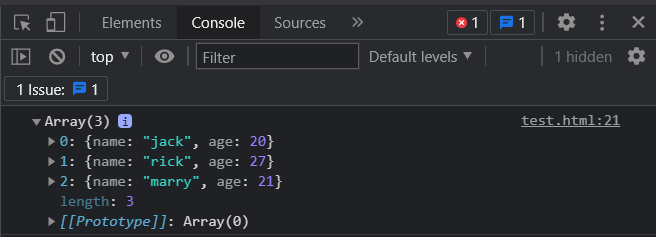
1. map() 메소드
1-1. 구문
arr.map(callbackFunction(currentValue, index, array), thisArg);
- currentValue : 배열 내 현재값
- index
- array : 현재 배열
- thisArg : 콜백함수 내에서 this로 사용될 값
1-2. 예시
> a = [10, 11, 12, 13, 14, 15];
let answer = a.map( (v, i) => {
return v*v;
});
console.log(answer);
[100, 121, 144, 169, 196, 225]1-3. 주의사항
1-3-1. return된 배열의 길이는 원본 배열의 길이와 동일해야 한다
> a = [10, 11, 12, 13, 14, 15];
let answer = a.map( (v, i) => {
if(v%2 === 0) return v;
});
console.log(answer);
[10, undefined, 12, undefined, 14, undefined]2. filter() 메소드
2-1. 예시
let data = [
{ name: 'jack', age: 20 },
{ name: 'kevin', age: 16 },
{ name: 'rick', age: 27 },
{ name: 'marry', age: 21 },
{ name: 'rilly', age: 19 }
];
let result = data.filter((x) => {
return x.age >= 20;
});
console.log(result);<실행 결과>

😮 map() 함수와는 다르게 검색 조건으로 새로운 배열을 생성해준다!
3. reduce() 메소드
3-1. 구문
const numberList = [1, 2, 3, 4, 5, 6, 7, 8, 9, 10];
const totalResult = numberList
.reduce((initialValue, currentValue, currentIndex, array) => {
return initialValue + currentValue;
}, 0);
3-2. reduceRight 메소드
reduce() 메소드와 동일하되, 오른쪽 원소부터 순회한다.
3-3. 읽어볼 것
https://www.zerocho.com/category/JavaScript/post/5acafb05f24445001b8d796d
해당 링크 글을 읽고 reduce() 메소드에 대해 좀 더 깊게 이해하자
